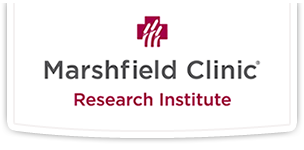What Happens to Your Grant Application?
Your application is assigned to a review group within NIH Institute or Center.
One or more CSR Referral Officers examine your application and determine the most appropriate Integrated Review Group (IRG) to assess its scientific and technical merit. Your application is then assigned to one of the study sections. A study section typically includes 20 or more scientists from the community of productive researchers. Your application also will be assigned to the NIH Institute or Center (IC) best suited to fund your application should it have sufficient merit. (More than one IC may be assigned if appropriate.)
Checking the status of your application
As soon as your application is received and assigned to a study section, notices are posted to your online NIH Commons account. Information on the Commons and how to register is available via the Commons Web page. You may question either your study section or IC assignment by contacting the Scientific Review Administrator (SRA) named in your notification or the CSR referral office (301-435-0715). It usually takes weeks to refer the thousands of applications submitted each round. If a notice is not posted in your Commons account within three weeks of the submission date, you should contact the referral office.
Reviewers are identified
Your SRA will analyze the content of your application, check for completeness, and decide which reviewers can best evaluate it. Reviewers receive a copy of your application approximately 6 weeks before their meeting. Each application is assigned to three reviewers, and at least two of them provide written critiques. These assigned reviewers lead the discussions at the meeting. Before the study section meets, reviewers confidentially submit preliminary critiques and scores to CSR. Reviewers are then given a list of applications that were initially scored in the lower half. If all reviewers agree, these applications are “streamlined,” which means they will not be discussed at the meeting. “Streamlining” is not equivalent to disapproval, so applicants may resubmit a better application after considering the critiques they receive.
The review meeting is convened
Study sections convene for about two days. One member serves as chair and conducts the meeting with the SRA. Relevant NIH extramural staff are encouraged to attend, but they may not participate in the evaluation. Assigned reviewers and discussants present their evaluations and outside opinions are read. After a general discussion, reviewers mark their priority scores privately on scoring sheets, which are later tabulated by CSR.
The results are released to you
Within a few days after the meeting, your priority score and percentile ranking is available to you via the NIH Commons. Within a month, your summary statement will be available via your NIH Commons account.
The assigned NIH Institute or Center takes charge
After the review, an IC Program Officer will be your main point of contact. He or she may help interpret your review results or answer questions about the further consideration of your application. In a second level of peer review, IC Advisory Councils may consider the study section’s recommendations and determine the relevance of your proposed research to IC priorities and public health needs.
